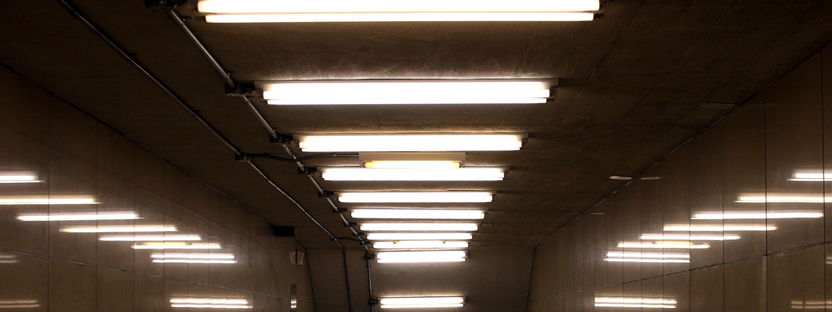I Hate My Office’s Fluorescent Lights!
Posted by Bindertek on Apr 27th 2018
Ask Bindertek:
I’ve been struggling with the overhead fluorescent lights at work. I get headaches sometimes when trying to focus on printed reports and I feel like they’re ruining my ability to concentrate. What should I do?
Fluorescent lights seem to be the bane of office workers everywhere. While we wish we worked in a corner office lined with windows or a modern, glass-walled co-working space, we’re doomed instead to the reality of harsh fluorescent lights killing our productivity (and killing all our office plants). Depending on your company culture, you might be able to advocate for a change. See if any of your coworkers feel the same, and you can present your case together as a united front.
If you feel comfortable doing so, you can start by approaching HR, your boss, or head facilities manager to discuss the options for different overhead lights. They likely won’t be able to switch from fluorescent lights entirely but could be open to trying a different temperature or lumens, which might help to improve conditions. Ask for lights with a temperature that mimics natural daylight, between 5000K and 7000K, to improve productivity and reap the benefits of natural light even in a windowless cubicle farm. Standards set forth by the US General Services Administration call for 500 lumens/square meter in office spaces, so your office likely meets that requirement.
Need help convincing them? Drop the magic word: productivity! According to a Cornell study on environmental conditions and productivity, performance decreases if lighting is too dim, too bright, or too glaring. However, the study also notes that light requirements change from person to person due to age and the task at hand. Since lighting preferences are individual, your office might be more open to providing task lights to employees so each person can customize their space.
Right in line with the Cornell study findings, a study on adjustable task lighting by the National Institute of Health concluded that people are more comfortable, have less eye fatigue, better posture, and better perception of job content with a good quality task light. Sounds like the kind of buzzwords the higher-ups will take notice of! Any adjustable light will work, though consider what type of light fits your work style and your working space. Do you want a desk top lamp that will take up valuable real estate? Do you need an adjustable arm to better direct the light? Do you prefer a light with a built-in dimmer function?
We’re admittedly biased towards our Modern Desk Lamp, which boasts an adjustable arm, several temperature settings and brightness levels, and an energy-saving LED. The flat base doubles as a wireless charging station for Qi compatible devices and lights up with color-changing LEDs for extra flair. You don’t need a lamp with all those bells and whistles though. Take notes about what conditions cause your headaches or concentration issues to pinpoint where and when you need an extra light source to ensure you choose the task light that’s ideal for your situation.
Of course, if you’re still struggling after a few weeks with different light bulbs and/or a task light, consider checking in with your doctor in case other sensory factors are to blame for your headaches and inability to concentrate. Getting the assistance of a medical professional is key in case your condition is covered by the ADA, in which case your employer will work with you to settle on a solution to improve your workplace.

